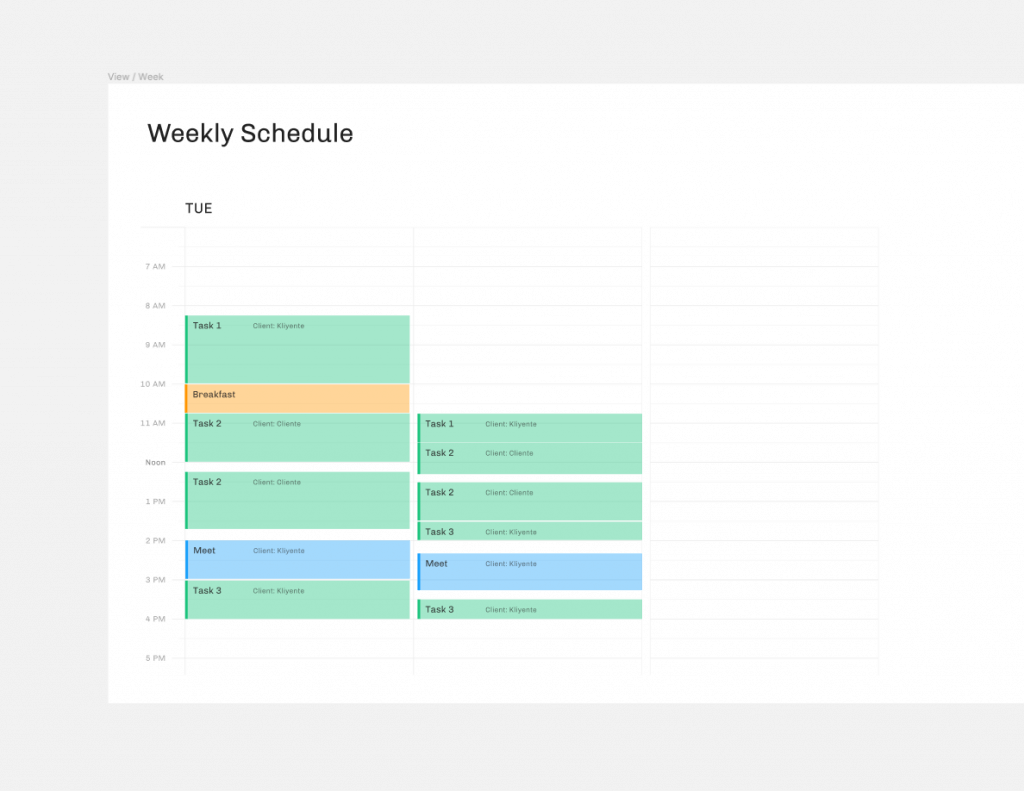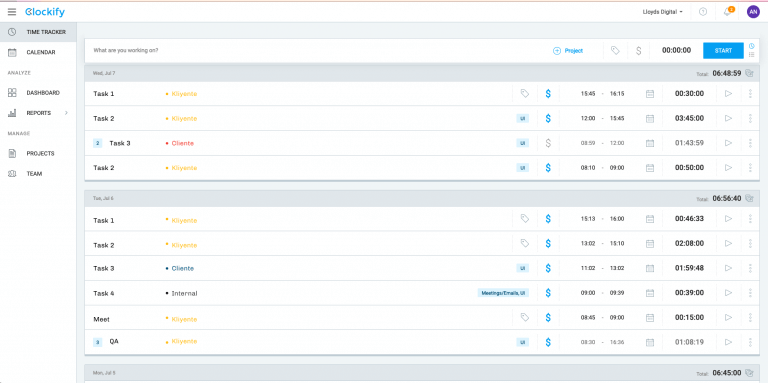
Does your workday finish with inserting the entries in the time tracking app? Do you find that a boring chore to do? Or on the other hand, do you feel that your workdays are unorganized, full of distractions that bring you further from accomplishing your tasks. Don’t worry if you found yourself in any of these situations – you’re not alone.
For the first couple of months of my employment, I struggled heavily with my time tracking. Most of the time, I was writing retrospectively while having a hard time remembering what I was doing at 9 AM this morning (remembering what I was doing the day before was even worse). The whole tracking experience wasn’t enjoyable at all. Jumping from task to task was also my pain point at that time. I would be doing one thing for 15 minutes then switch to another for a few minutes, then once again returning to the primary thing, and so on. To be honest, my concentration wasn’t the best, so I probably haven’t delivered the high-quality stuff I could’ve had.

I was exploring the whole Productivity world at this particular time, and I felt even worse while inserting the entries in the time tracking app. I figured there had to be another way of doing this. So I started experimenting with the Pomodoro technique, decluttering the workspace, quitting multitasking, to-do lists, etc. Some of the techniques worked and helped me; some of them didn’t, but I’m glad I tried them. Every person is different, and what suits me, doesn’t mean it will work for all the people out there.
How did I schedule my workday?
First and foremost, I started to write my daily schedule as I arrived at work. I divided my day into blocks. Every block has the task name and the client’s name. I made as many blocks as I needed throughout the day, depending on projects I am working on, meetings I should attend, and all other day-to-day tasks. What I forgot, in the beginning, was to leave some room for breaks, so don’t make the same mistake. Keep in mind that the schedule is rarely correct at the end of the day. I revise it several times during the day because something may pop up (or take unexpectedly less or more time than planned).
I keep my scheduler in Figma because I can manipulate it freely, and I also have it opened most of the day, but you can write it in any digital calendar of your choice (Google, Apple or Outlook calendars are popular choices). Or you can always write it on paper if that’s handy for you.

This technique keeps me a lot more focused on the task at hand, and it also helps me prioritize the tasks so I can squeeze in the more challenging tasks earlier in the day when I am fresher. Also, if the next task cannot be deferred, I turn the alarm on so I don’t lose track of my time and miss it.
This proved to be a big step (in the right direction) for my time tracking problem. This technique isn’t original, I got it from a book and adapted it to my needs. Read Deep Work by Cal Newport for more in-depth info about this (and a lot of other) techniques.
Painless time tracking
While talking with more experienced employees, someone mentioned that they start the time tracker before every task they plan to execute. That stuck with me, and it seemed a good way to go. So I have also decided to start the tracker before the task.. It worked for a few days but I haven’t made that a habit so I returned to my retrospective filling. At that time, I started with the scheduling and the whole time tracking thing got a lot easier. I started to turn the time tracker on before the task more often. Sometimes I forget to turn it on, but I’m not making a big fuss out of it because it’s perfectly normal to forget sometimes (just don’t forget for 2 days straight or it will be harder to come back that way). Being able to turn the time tracker on, before you start working on a task, takes a lot of repetition before it actually becomes automated. But it’s definitely worth it. If you’d like to learn more about habit making, then Atomic Habits is a great book to begin with.

How did this improve me as an employee and a person?
I believe there is a human need for postponing or completely avoiding complex tasks and finding an easier way out. This way you put yourself into a safe zone where your progress stagnates, leaving you not accomplishing goals you ascribed. Effective time tracking was a goal I set for myself and, together with the scheduling, I achieved my goal. The results have a big positive impact on my workflow and I’m proud of myself for investing the time to get it right.
Here are some of the benefits I noticed:
- Increased focus on the task.
- No more end-of-the-day stressful struggling with time tracker; you can go home in peace.
- You can estimate yourself and your work better.
- Scheduling lets you accomplish hard things easier and with motivation.
- Implementing these techniques sets you on a good path to begin Weekly, but also Free time scheduling (which seems to me as a way to go).
Closing thought
When you find yourself struggling, try to look at it from an objective point of view. Can you make that struggle go away and what it takes for it to go away? Once you start addressing these issues and finding solutions, there is nothing that can stop you from thriving at work, relationships, and life eventually.